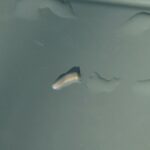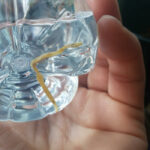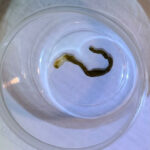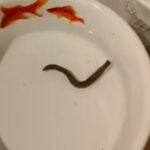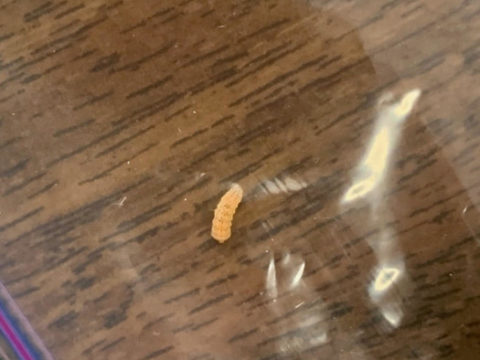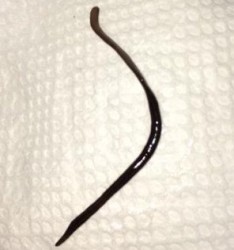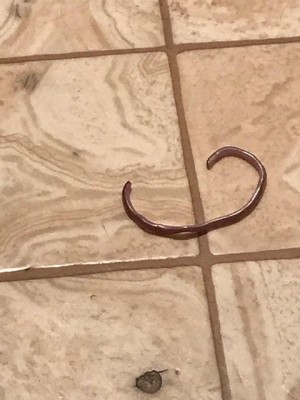
It seems to us that almost every summer, the flatworm becomes the target of news stations who want to spread mass hysteria and inject fear into the hearts of those who might not know any better than to trust the words of journalists twisting the words of experts. We’re here to set the record straight and clear the name of flatworms. This year, hammerheads are being targeted. They have been targeted in the past, but so has the New Guinea flatworm. In this article we will be responding to a “ CBS article on hammerheads” published by Li Cohen.
Now, if you read the entire article, you will find that Cohen does a decent job summarizing the hammerhead’s key qualities and pointing out that they are not that dangerous to humans. However, newspapers and news stations have to be aware that many people do not read entire articles and will only read the headline and the first few paragraphs. This is the impression that you will get if you only read the beginning of the article: that hammerheads are “creepy”, “poisonous”, and “invasive”. The article paints a cautionary tale, and the title reinforces this (“Experts warn…”). But in the case of hammerhead worms, there is not much to warn people about. Let’s start with what is true in this article about why the “hammerhead worm” is bad.

Firstly: yes, hammerheads are poisonous, and they can secrete a “paralyzing” toxin “found in puffer fish”. However, Cohen does not specify that this toxin is only paralyzing and lethal to prey that is much smaller than any human or pet. There is no record of a hammerhead successfully taking down a mammal. They use these toxins to kill worms, insects, larvae, and other flatworms, not human beings. We still recommend avoiding irritating hammerheads, as the secretion can cause skin irritation, which Cohen later points out. But it is so important to mention that their “lethal” toxin is not lethal to humans at all.
Secondly, hammerheads are an invasive species, but the extent to which their presence will affect the biodiversity of the ecosystems they are found in is greatly exaggerated. Cohen writes that hammerheads are bad because they prey on earthworms, implying that they are some kind of threat to earthworm populations. She mentions that in Texas, over 351 sightings of the hammerhead have been recorded, while in North Carolina, Georgia, and California, over 200 have been spotted since 2000. That’s over 200 in 23 years. Of course, the number of sightings does not correspond to the number of worms that are actually present. But equally, you cannot make a correlation between the number of earthworm sightings to their actual populations, and while hammerheads do travel in plain sight, earthworms live underground.
The flipside to this is that over population of earthworms can also be characterized as something ‘bad’, not to mention that there are also invasive species of earthworms, like “ the jumping worm“, which has appeared in Texas and is spreading across the South, as well as across other States. These worms also threaten the existence of native earthworm species, as they steal resources and overeat, thereby degrading the nutrient-richness of the soil systems they occupy. Elizabeth Gamillo points out that the jumping worm reproduces quickly, which is what makes them a concern. Given this information, one might suggest that keeping hammerheads around, which feed on earthworms, might actually be beneficial if earthworm overpopulation is occurring. Of course, more studies would have to be conducted on this front to verify whether or not this is an accurate statement.
Similarly, according to the Texas Invasive Species Institute’s page on “hammerhead worms“, hammerheads reproduce “primarily […] through fragmentation” (when a hammerhead gets cut into bits, each bit will grow a new head and/or tail and become a new worm). What this implies is that the rate at which hammerheads reproduce is partially up to us. Fragmentation is typically a defense mechanism or a result of another organism directly harming the hammerhead and causing it to split into multiple parts. So, the more people fear hammerheads and are encouraged to kill them, the more hammerheads we will get as a consequence. Maybe if we left them to their devices, hammerheads would likewise not fear us and not feel the need to fragment themselves.
In conclusion, this has been a brief response to one of the many articles that attempts to demonize hammerhead flatworms for the sake of unnecessarily spreading fear. Hammerhead worms should be avoided because they can secrete a toxin which may cause an allergic reaction, but they cannot paralyze or kill humans (or pets), and there is not sufficient data to support the idea that hammerheads are responsible for any significant population losses of earthworms. We hope this has proven interesting, and we wish our readers, as well as the hammerhead flatworms of the world, the very best.
All About Worms is always free, always reader-supported. Your tips via CashApp, Venmo, or Paypal are appreciated! Receipts will come from ISIPP Publishing.
You might also find these guys interesting!








